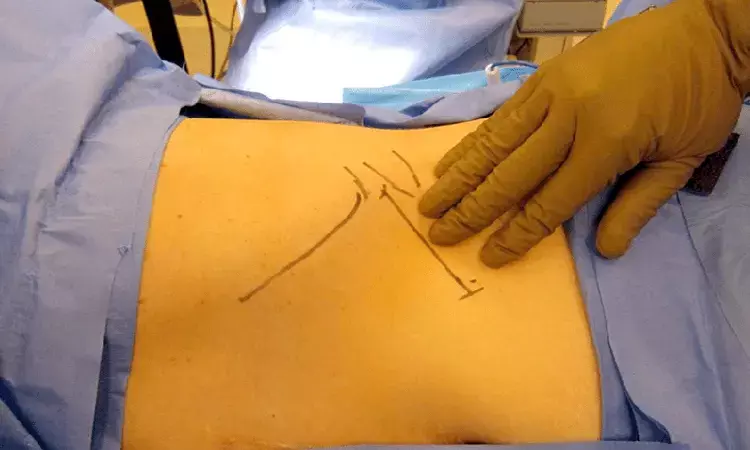- Home
- Medical news & Guidelines
- Anesthesiology
- Cardiology and CTVS
- Critical Care
- Dentistry
- Dermatology
- Diabetes and Endocrinology
- ENT
- Gastroenterology
- Medicine
- Nephrology
- Neurology
- Obstretics-Gynaecology
- Oncology
- Ophthalmology
- Orthopaedics
- Pediatrics-Neonatology
- Psychiatry
- Pulmonology
- Radiology
- Surgery
- Urology
- Laboratory Medicine
- Diet
- Nursing
- Paramedical
- Physiotherapy
- Health news
- Fact Check
- Bone Health Fact Check
- Brain Health Fact Check
- Cancer Related Fact Check
- Child Care Fact Check
- Dental and oral health fact check
- Diabetes and metabolic health fact check
- Diet and Nutrition Fact Check
- Eye and ENT Care Fact Check
- Fitness fact check
- Gut health fact check
- Heart health fact check
- Kidney health fact check
- Medical education fact check
- Men's health fact check
- Respiratory fact check
- Skin and hair care fact check
- Vaccine and Immunization fact check
- Women's health fact check
- AYUSH
- State News
- Andaman and Nicobar Islands
- Andhra Pradesh
- Arunachal Pradesh
- Assam
- Bihar
- Chandigarh
- Chattisgarh
- Dadra and Nagar Haveli
- Daman and Diu
- Delhi
- Goa
- Gujarat
- Haryana
- Himachal Pradesh
- Jammu & Kashmir
- Jharkhand
- Karnataka
- Kerala
- Ladakh
- Lakshadweep
- Madhya Pradesh
- Maharashtra
- Manipur
- Meghalaya
- Mizoram
- Nagaland
- Odisha
- Puducherry
- Punjab
- Rajasthan
- Sikkim
- Tamil Nadu
- Telangana
- Tripura
- Uttar Pradesh
- Uttrakhand
- West Bengal
- Medical Education
- Industry
Multiple-layer wound closure after flank incision reduces morbidity: Study

Germany: Multiple-layer wound closure after flank incision minimizes morbidity and should be performed as a standard procedure, according to a recent study in the BJU International.
Open flank incision is a standard approach for performing variablee troperitoneal surgeries. It has proven its safety and efficacy, especially in renal andaortic surgery. However it can lead to long-term morbidity caused by paraesthesia, pain, and paralysis of the lateral abdominal wall muscle, resulting in prolonged neuralgia, flank bulge formation, or even a flank hernia.
Maximilian C. Kriegmair, University Hospital Manheim, Mannheim, Germany, and colleagues compared the incidence of postoperative flank bulges between patients with multiple‐layer closure and single superficial‐layer closure after retroperitoneal surgery performed open flank incision in the SIngle versus MUltiple‐LAyer wound Closure for flank incision (SIMULAC) -- a randomised controlled, patient‐ and assessor‐blinded, multicentre trial.
The study included 225 patients undergoing flank incisions. They were randomized in the ratio 1:1 to either multiple‐layer closure (SIMULAC‐I) or a single superficial‐layer closure (SIMULAC‐II) group. The primary outcome was the occurrence of a flank bulge 6 months after surgery.
177 patients (90 in SIMULAC‐I, 87 in SIMULAC‐II) were eligible for final assessment.
Key findings of the study include:
- The cumulative incidence of a flank bulge was significantly higher in the SIMULAC‐II group (51.7%) compared to the SIMULAC‐I group [34.4%; odds ratio (OR) 2.04].
- Rate of severe postoperative complications (4.4% SIMULAC‐I vs 10.3% SIMULAC‐II) or hernia (6.7% SIMULAC‐I vs 10.3% SIMULAC‐II) was similar between the groups.
- There was no difference in pain (visual analogue scale) and the requirement for pain medication at 6 months postoperatively.
- Quality of life assessed with the European Quality of Life 5 Dimensions Questionnaire was higher in the SIMULAC‐I group compared to the SIMULAC‐II group at 6 months postoperatively, with a (median range) score of 80 vs 75.
"The overall risk of a flank bulge after flank incision is high. Multiple‐layer closure after flank incision should be performed as a standard procedure," concluded the authors.
Dr Kamal Kant Kohli-MBBS, DTCD- a chest specialist with more than 30 years of practice and a flair for writing clinical articles, Dr Kamal Kant Kohli joined Medical Dialogues as a Chief Editor of Medical News. Besides writing articles, as an editor, he proofreads and verifies all the medical content published on Medical Dialogues including those coming from journals, studies,medical conferences,guidelines etc. Email: drkohli@medicaldialogues.in. Contact no. 011-43720751


